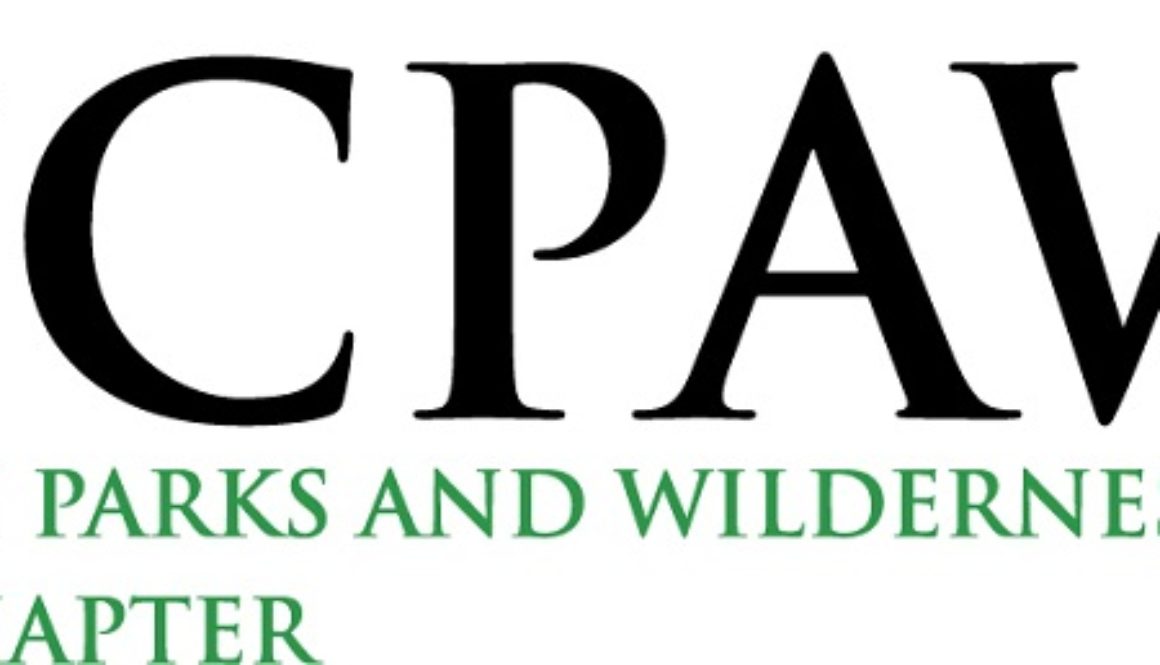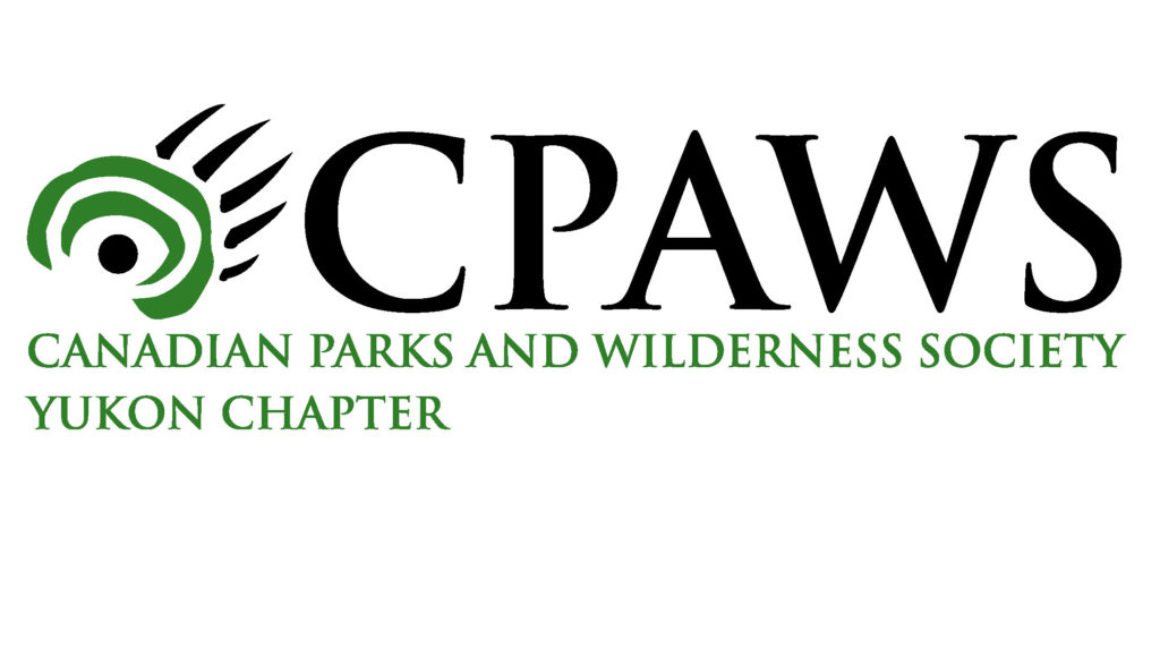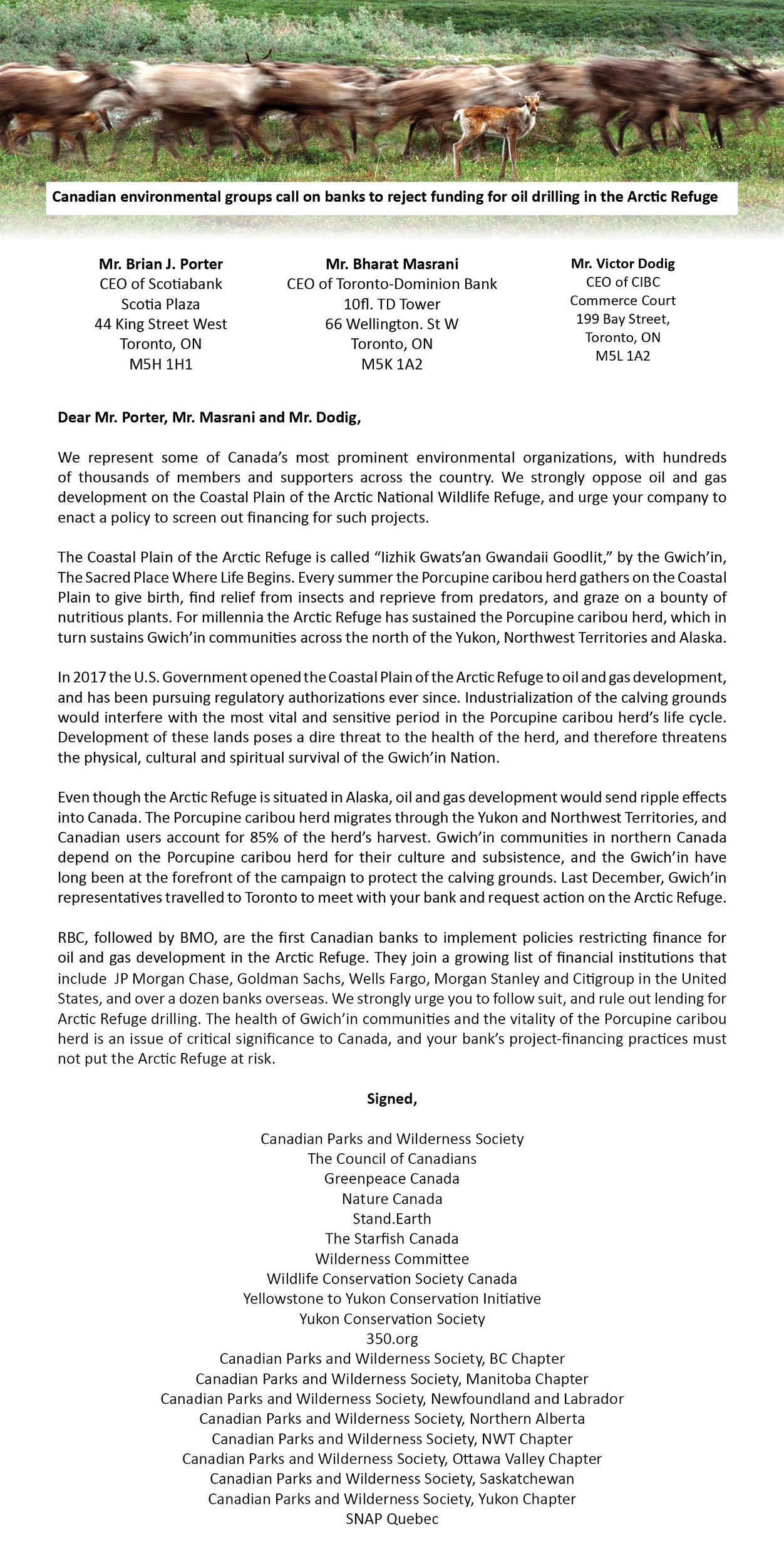August 24, 2020
For Immediate Release
Gwich’in & allied groups sue Trump agencies for illegal lease program in Arctic Refuge Lawsuit charges BLM with failing legal obligation to protect land, water, wildlife, and people
ANCHORAGE (AK)— The Gwich’in Steering Committee and allied groups took Trump’s Secretary of the Interior and the Bureau of Land Management to court today for finalizing an illegal leasing program that would hand over the coastal plain of the Arctic National Wildlife Refuge to the oil and gas industry.
“BLM’s decision to violate lands sacred to my people and essential to the health of the Porcupine caribou herd is an attack on our rights, our culture and our way of life,” said Bernadette Demientieff, executive director of the Gwich’in Steering Committee. “We have lived and thrived in the Arctic for thousands of years. We have listened and learned from our elders, and we know we must stand united to protect future generations, and that means going to court to protect the caribou herd and sacred lands.”
BLM released its Record of Decision on August 17, allowing the leasing of the entire coastal plain. This biologically rich, over 1.5-million-acre area serves as birthing and calving grounds of the Porcupine caribou herd, feeding and molting grounds for millions of birds, and denning grounds for an array of mammals such as wolves and endangered polar bears. The lawsuit charges BLM with failing to comply with laws governing agency processes and protecting land, water and wildlife.
“BLM rushed its analysis, curtailed public participation, shortchanged Indigenous input and concerns, and omitted science and facts,” said Brook Brisson, senior staff attorney with Trustees for Alaska. “The decision-making process has been fundamentally flawed from day one. It’s no surprise that the outcome is a leasing program that flagrantly breaks the law and fails to respect and protect human rights, the public trust, and one of our nation’s most iconic public lands.”
The lawsuit charges BLM with violating the Alaska National Interest Lands Conservation Act, the National Wildlife Refuge System Administration Act, the National Environmental Policy Act, the Wilderness Act, and the Endangered Species Act—all bedrock laws that protect our nation’s public lands, waters, wildlife, and people. Find the full complaint
here.
Law firm Trustees for Alaska represents 13 clients in the lawsuit: Gwich’in Steering Committee, Alaska Wilderness League, Alaska Wildlife Alliance, Canadian Parks & Wilderness Society-Yukon Chapter, Defenders of Wildlife, Environment America, Friends of Alaska National Wildlife Refuges, National Wildlife Federation, National Wildlife Refuge Association, Northern Alaska Environmental Center, Sierra Club, The Wilderness Society, and Wilderness Watch.
The administration has 60 days to respond to the lawsuit. The agencies will likely begin the process for holding a lease sale soon.
Client statements:
“This process has been deeply flawed from the beginning, with the Department of the Interior cutting every possible corner in its rush to sell off the coastal plain to the highest bidders,” said Karlin Itchoak, Alaska director for The Wilderness Society. “Fortunately, the courts stand in the way of this reckless endeavor, and we will pursue every opportunity to defend the wildlife and natural wonder of the coastal plain, and the rights of Indigenous people who depend on this landscape and the Porcupine Caribou Herd that calves there.”
“Alaskans will not tolerate this administration selling off sacred places,” said Elisabeth Balster Dabney, executive director for the Northern Alaska Environmental Center. “We have a long history of protecting the places we care about, and remain committed to stopping the destruction of these irreplaceable lands and waters. We value them just the way they are: as a Refuge. The coastal plain is not for sale.”
“The Arctic Refuge is the calving grounds of the Porcupine caribou herd,” said Chris Rider, executive director of CPAWS Yukon. “Each year, they migrate from Alaska to their wintering grounds in the Yukon and Northwest Territories. They are a keystone species for the Yukon’s delicate wilderness. As one of the last healthy barren-ground herds, any development that threatens their health is a risk to the viability of the entire species. We are joining this lawsuit because we believe it is important to have Canada’s interest in the health of the Porcupine caribou herd represented before the courts.”
“This proposed desecration of the coastal plain of the Arctic Refuge is an outrageous assault on its incomparable wildlife and habitat, the traditional lifestyle and culture of the Gwich’in Nation, and the overwhelming desire of the American people to preserve this intact ecosystem for future generations,” said Dr. David Raskin, president of the Friends of Alaska National Wildlife Refuges. “This misguided effort to line the pockets of the oil industry for political gain will be defeated by the legitimate stakeholders, just as it has been many times since the Refuge was established by ANILCA in 1980. We will not allow the rights of the public to be trampled by this flawed process that flies in the face of the many laws and regulations that are designed to enhance and preserve our national heritage.”
“The scheme to drill this national treasure has always been morally wrong, but the process the Trump administration is utilizing to get development steamrolling ahead is flat out illegal,” said Adam Kolton, executive director of Alaska Wilderness League. “Science has been trampled. The voices of the Gwich’in shunned. Environmental laws and even the bare bones requirements of the Tax Act have been ignored. This is a ruse masquerading as an environmental review and we will not stand idly by while Trump’s Interior Department seeks to auction off the wildest place left in America to the highest bidder.”
“Opening up the Arctic National Wildlife Refuge to oil and gas development is reckless and illegal,” said Jamie Rappaport Clark, president and CEO of Defenders of Wildlife. “Industrializing this area could be the death knell for this imperiled polar bear population. We will not back down in the fight to protect this irreplaceable landscape.”
“Oil drilling and wildlife simply do not mix,” said Steve Blackledge, senior director for Environment America’s Conservation Program. “The Trump administration’s slapdash push to start oil exploration and drilling in the Arctic National Wildlife Refuge must be stopped. It is foolhardy and blind to the reality that in 2020, clean renewable energy options are rapidly on the rise.”
“The Arctic Refuge stands alone as America’s wildest, most ecologically intact landscape supporting a great diversity of life,” said Fran Mauer, Alaska chapter representative of Wilderness Watch. “It holds an unparalleled place in our nation’s conservation history and in our national conscience. We must protect this national treasure from irreversible harm that will result from this heavily flawed process and decision.”
“The Trump administration’s so-called environmental review process for drilling in the Arctic Refuge has been a sham from the start,” said Lena Moffitt, senior director of the Sierra Club’s Our Wild America campaign. “They’ve suppressed science and ignored the wishes of the American people, and we will not allow this reckless sell-off to go unchallenged.”
“The coastal plain of the Arctic Refuge has immense intrinsic, scientific, and subsistence value to our members and our state,” said Nicole Schmitt, the executive director of the Alaska Wildlife Alliance. “We stand with the Gwich’in people who rely on these sacred lands for their food and culture, and with our members who recreate and appreciate these natural spaces, in opposing any oil and gas activities in the Arctic Refuge. We stand, too, with the majority of Americans who oppose oil and gas extraction on these lands, and with the polar bears, caribou, birds, and other Arctic animals who cannot go to court or speak out to protect their own health and the health of the lands and waters they need to thrive.”
“Drilling in the Arctic will irreparably scar one of the last remaining wild places on earth. Polar bears, porcupine caribou, musk oxen, and millions of migratory birds depend on this pristine habitat for their survival,” said Collin O’Mara, president and CEO of the National Wildlife Federation. “By flagrantly disregarding the advice of the federal government’s top wildlife biologists and failing to follow numerous laws, the Trump administration has left us no choice but to file this lawsuit in solidarity with the Gwich’in Nation to stop this reckless plan to drill in the crown jewel of wildlife refuges.”
“The National Wildlife Refuge Association stands firmly against the attempt to open any portion the Arctic National Wildlife Refuge to oil and gas development, including lease sales,” said Geoffrey L. Haskett, president, National Wildlife Refuge Association. “This landscape is protected for a reason: for the Gwich’in people who depend on this land for life, for the tremendous biodiversity and wildlife that call the refuge home, and for all the Americans who do not live nearby, but cherish and value this iconic and pristine land and everything it offers us all. The Arctic National Wildlife Refuge should be left untouched. This place is wild and remote and valuable beyond measure, and we cannot bear the risk of drilling there.”
Tim Woody, Alaska communications manager, The Wilderness Society,
tim_woody@tws.org, 907-223-2443
David C. Raskin, president, Friends of Alaska National Wildlife Refuges, (425)-209-9009,
davidc.raskin@me.com
Corey Himrod, senior communications manager, Alaska Wilderness League, (202) 266-0426,
corey@alaskawild.org
Erica Watson, communications manager, Northern Alaska Environmental Center, (907)-452-5093,
erica@northern.org
Fran Mauer, Alaska chapter representative, Wilderness Watch, (907) 455-6829 or (907) 978-1109,
fmauer@mosquitonet.com
Chris Rider, executive director, CPAWS Yukon, (867)-393-8080 or (867) 332-5300 (cell),
crider@cpawsyukon.org
Dawnell Smith, communications director, Trustees for Alaska, (907) 433-2013,
dsmith@trustees.org




